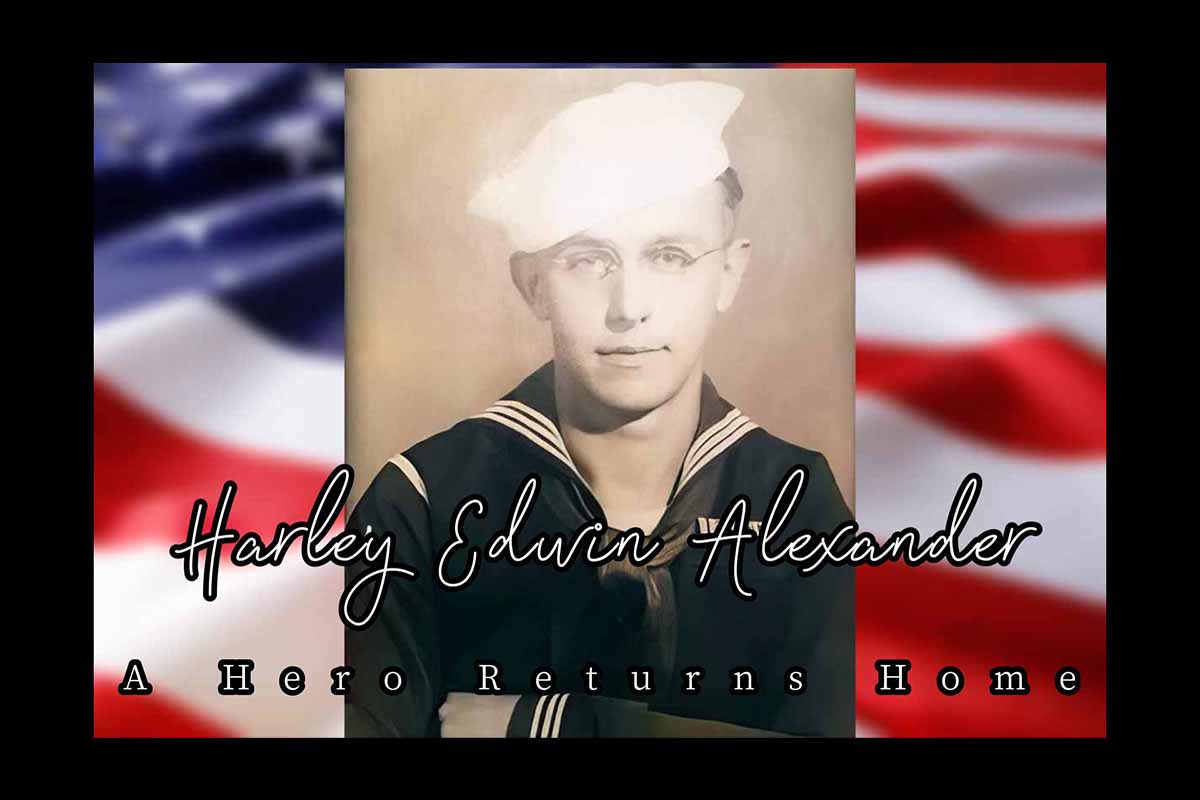
Harley Edwin Alexander was born on March 29, 1922 in New Madison. After graduating from High School he joined the Navy at the age of 20 on August 4, 1942. He served onboard the destroyer USS Glennon during World War II. On June 8, 1944, the USS Glennon hit a mine in the English Channel and Alexander was listed as “Missing in Action”. Through efforts of the “Defense POW/MIA Accounting Agency”, it was possible to bring Alexander home to rest in New Madison alongside his family.
After multiple weather delays, Alexander was on his final flight back home with the destination Dayton International Airport, where he arrived on Friday, June 28 at 12:45PM.
On the way from the Airport to Greenville, the Hearse was accompanied by the family, a brigade of motorcycles, Police, Sheriff and State Trooper vehicles, and service men and women, escorting the solider home after 80 years.
Many people welcomed the soldier along the route, displaying the American flag. The procession arrived in Greenville at about 2PM (click here for a video and click here for photos).
On Saturday, June 30, the procession departed at 10:15 AM from the Funeral Home for the Greenmound Cemetery in New Madison (click here for photos of the procession, click here for a video).
Alexander was laid to rest with a gravesite service with full military honors (click here for photos)
Here is more info about Alexander’s history and how it was possible to bring him home, provided by The Defense POW/MIA Accounting Agency (DPAA):
Navy Coxswain (Cox) Harley E. Alexander, 22, of New Madison, Ohio, killed during World War II, was accounted for on Mar. 22, 2024.
On June 8, 1944, Alexander was assigned to the destroyer USS Glennon, which struck a mine off the coast of Quinnéville, France, which forced 16 sailors overboard. Ultimately, the majority of the crew had abandoned the vessel, but a few remained on board for salvage operations, including Alexander. Two days later, on June 10, the Glennon was struck by multiple artillery barrages from German forces on shore, eventually causing the ship to sink late in the evening. Following the attack, 38 sailors had been wounded and 25 were missing, including Cox Alexander. Other than the rescued sailors thrown overboard from the initial mine strike, there is not report of any recovery of other missing sailors. The remains of Cox Alexander were not accounted for and he was deemed non-recoverable on May 4, 1949.
In 1957, pieces of Glennon were hauled to shore by salvagers. A local resident was searching through the larger sections of wreckage and found human remains within the forward portion of the ship. The remains were turned over to American officials and processing determined the remains to be those of at least two individuals, subsequently designated X-9296 and X-9297. After unsuccessful efforts to identify the remains, they were interred on 4 March 1959 in Ardennes American Cemetery, Neupré, Belgium.
In 2021, DPAA researchers began an effort to associate unresolved sailors from the Glennon based on historical documentation of the remains removed from the ship’s wreckage. By August 2022, the Department of Defense and the American Battle Monuments Commission exhumed unknown remains X-9296 and X-9297 from Ardennes American Cemetery for comparison with unaccounted-for sailors from Glennon.
To identify Alexander’s remains, scientists from DPAA used anthropological analysis. Additionally, scientists from the Armed Forces Medical Examiner System used mitochondrial DNA (mtDNA) and Y-chromosome DNA (Y-STR) analysis.
Alexander’s name is recorded on the American Battle Monuments Commission’s Wall of the Missing at Cambridge American Cemetery, Cambridge, England, along with the others who are missing from WWII. A rosette will be placed next to his name to indicate he has been accounted for.

